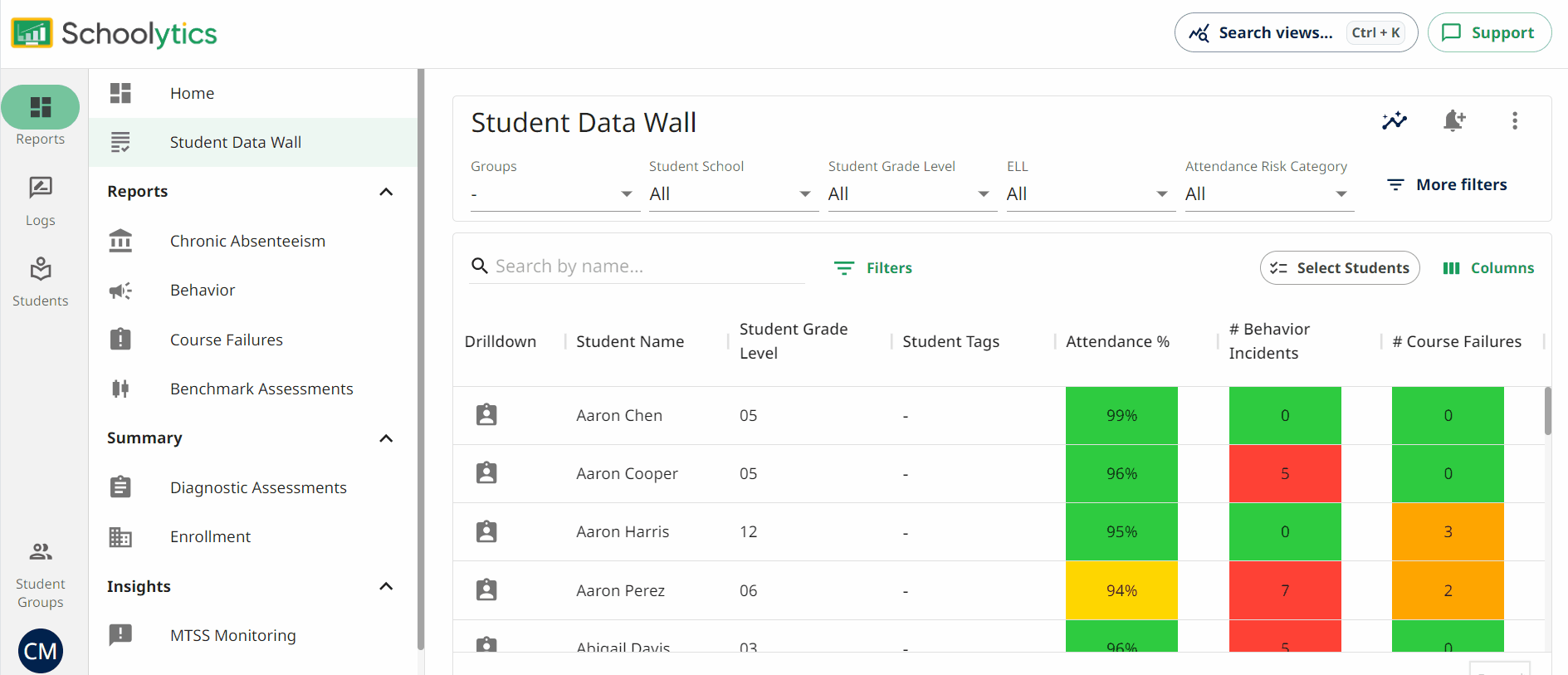Have everything you need to monitor student progress in one place


Use Data to Track and Monitor Student Academic Progress
- Establish Clear Goals: Define specific, measurable, achievable, relevant, and time-bound (SMART) goals for students, classes, and the institution as a whole.
- Collect Comprehensive Data: Gather data on various aspects, including attendance, behavior, assessment scores, and homework completion.
- Regular Assessment: Conduct regular assessments and evaluations to measure progress against established goals. Use a variety of assessment methods, including formative and summative assessments.
- Data Analysis: Utilize data analysis tools to identify trends and patterns. Look for areas of improvement and potential interventions.
- Feedback and Communication: Maintain open channels of communication among administrators, teachers, students, and parents. Share data and progress reports regularly to facilitate collaboration.
- Interventions and Support: Implement targeted interventions for students who require additional assistance. Offer counseling, tutoring, or behavioral support as needed.
- Continuous Improvement: Use the insights gained from data analysis to adapt strategies and continuously improve the educational experience.
District & School Administrators
Teachers & Specialists
Informed Decisions
Personalized Instruction
Administrators can use data-driven insights to make informed decisions about curriculum development, resource allocation, and staff training. This ensures that the district is constantly evolving to meet the needs of students.
Teachers can tailor their instruction based on individual student data, addressing areas where students may need extra support or providing advanced material for those who are excelling.
Resource Optimization
Early Intervention
By identifying areas where students may be struggling, administrators can allocate resources more efficiently. This includes offering additional support to students who need it most, thus optimizing the use of budget and personnel.
Early identification of academic or behavioral issues allows teachers to intervene promptly. This can prevent problems from escalating and help students stay on track.
Accountability
Student Engagement
Having a system in place to track and monitor student progress can help administrators ensure accountability at all levels of the institution. It enables them to set and measure goals, both short-term and long-term.
Family Engagement
Sharing clear and compelling data with parents and guardians can help everyone get and stay on the same page. When parents feel informed, they are more likely to engage with school staff.
Students are motivated by setting goals, identifying the starting point, and having a clearly-defined path to achieve those goals. Data is a key lever in defining goals and tracking progress.
Professional Development
Teachers can use data to assess the effectiveness of their teaching methods and seek professional development opportunities that align with student needs.
